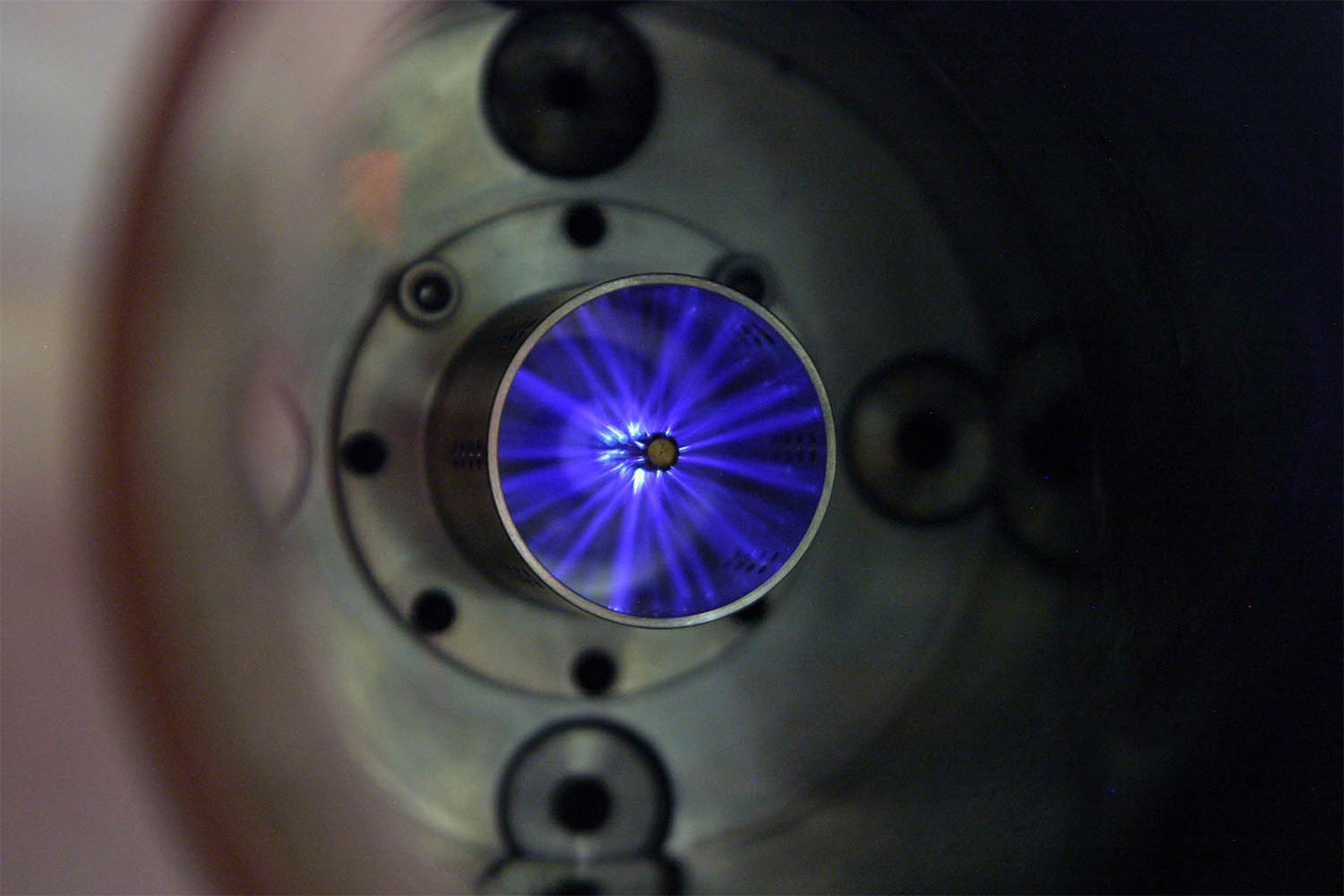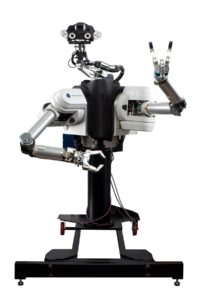
Star Wars resembles advancements in USC research.

Mandy Robot, from the USC Viterbi School of Engineering, can remove lug nuts from a tire with a wrench and knows how to use a drill. (Photo/courtesy of USC Viterbi)
Famous icons of the Star Wars saga, such as lightsabers, holograms, and futuristic robotics, can be seen not only in the films by USC Alum George Lucas, but also in the real-life work at USC.
Researchers at USC are creating real-life revolutionary advancements in technology that resemble the effects in the imaginary intergalactic world of Star Wars: The Force Awakens.
Paul Debevec, chief visual officer at the USC Institute for Creative Technologies, credits the space adventure films for creating the most notable hologram. “Princess Leia coming out of R2-D2 and telling Obi-Wan Kenobi that he was her only hope sticks in the public consciousness of what a hologram is supposed to be,” said Debevec. However, this illustration of a hologram was created through composted video image and molded society’s expectation of holographic displays.
The USC Institute for Creative Technologies was established in 1999 and teaches students how to utilize artificial intelligence, graphics, virtual reality and narrative communities to solve problems facing service members, students and society. You can read more about the ICT’s groundbreaking research on their website, http://ict.usc.edu/.
Currently, Debevec and his coworkers are designing three-dimensional displays through projecting high-speed video onto a rapidly spinning mirror. Through this rendering process, Debevec and his team can create a visual effect of an object floating in space, without the use of virtual reality systems. Click here to learn more about the 360 light display systems.
Star Wars actually inspired Debevec and his team’s other project: 3-D video conferencing system. “There’s a moment when Yoda is supervising some operations on the Wookie planet but he still has to go to the Jedi Council meeting, so he shows up at the meeting as a hologram,” he said.
The system will cut across borders and reduce carbon emissions by creating virtual business meetings that can occur across the world. The system is expected to demonstrate next year. You can read more about progress of the 3D video teleconferencing system at http://gl.ict.usc.edu/Research/3DTeleconferencing/.
Assistants of the Future
Robots, such as the famous R2-D2 and C-3PO to the lovable, rolling BB-8 from the newest Star Wars film, were created by the moviemakers to help humans in intergalactic world. These robots had access to all the same places as humans.
USC’s Stefan Schaal was curious about the idea behind the rolling robot in Star Wars: The Force Awakens. “In general, rolling stuff is great on flat terrain,” said Schaal, a professor at the USC Viterbi School of Engineering. “For anything other than that, legs seem to be what nature prefers, and a better choice.”
However, real robots do not resemble their imaginary counterparts in the Star Wars universe. “There’s not a single robot which can manipulate the world with two hands or walk on two legs like we do,” Schaal said. “We are still working on the real basics of all these components.”
Following the success of robots in industrial environments, robots will soon become valuable in less structured settings, according to Schaal. Robots have the potential to significantly help humans in their homes, especially elderly people who need assistance picking up fallen objects and reaching items on high shelves while remaining self-sufficient.
“I think that within the next 10 to 20 years, we will see a large number of robots that will start to be useful in human environments,” Schaal said. Those bots could take the place of little household helpers, the droids that people are moving towards.
To learn more about Professor Stefan Schaal, you can read about his work in Computer Science, Neuroscience, and Biomedical Engineering at the USC Viterbi School of Engineering at http://www-clmc.usc.edu/~sschaal/. The USC Viterbi School of Engineering offers a variety of courses in engineering, computer science, and information technology. Read more about Viterbi’s innovative programs and curriculum at https://viterbischool.usc.edu/.
Make the lightsaber a reality
The lightsaber, a magnetically or electrically confined plasma blade, is one of the most iconic pieces from the Star Wars films.
Martin Gundersen, an electrical engineering professor at the USC Viterbi School of Engineering and leader the pulsed power group at USC, said that the technology behind the lightsaber would be difficult to create: “The magnetic field would be a big challenge.”
Through the USC pulsed power group, Gundersen and his coworkers have discovered how to manipulate the pulses of plasma to reduce greenhouse gas emissions on cargo ships and develop a more efficient process to ignite combustion. To learn more about Professor Gunderson and the Pulsed Power Research Group at USC, go to their website http://pulsedpower.usc.edu/.
ICT’s Debevec believes that are many crossovers between science fiction and research. “I think that it’s a wonderful two-way street: A lot of kids get inspired to go into science because of these movies,” he said. “It gives us something to shoot for, but it doesn’t solve the real problems of today.” The researcher has his tickets purchased, and is looking forward to being transported to a galaxy far, far away.